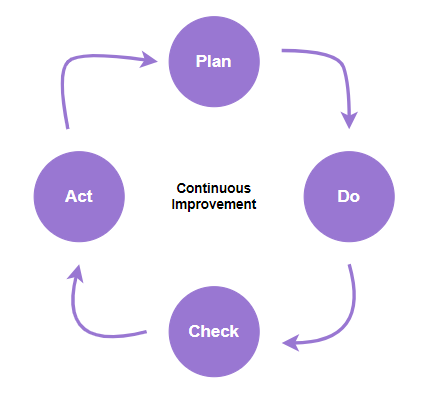Imagine the process of buying a new car. Before you buy a specific one you would develop an opinion on buying a certain brand by comparing that brand with others on the basis of reliability, performance, or fuel economy.

For quality to translate to your users, you need to create products and a culture that consistently meets certain requirements and standards. This makes it possible for your organization to be trusted by thousands and thousands of users. The process that enables this is called quality assurance.
In this article, you’ll learn what quality assurance is, different methods you can implement it with, and what the process looks like.
Quality assurance (QA) is a proactive approach to ensure your products or services meet defined quality standards, customer requirements, and real-world conditions.
It’s a process to prevent defects upfront and primarily focuses on building quality into the product from the outset, rather than exploring and correcting defects after development.
Quality assurance can involve a simple testing and verification activity on a small product before packaging/releasing to market, or it can be a complex set of activities in a process or multiple processes like producing a car or banking systems.
In general, there are two principles that any quality assurance team would follow:
Other principles that are commonly followed in QA are:
Quality assurance can be categorized into different types based on the context. There are four main types depending on your specific need:
Various types of quality assurance processes are at every phase of product or service delivery, but how do you effectively accomplish the desired outcomes? Certain methods help the QA team during analysis, exploration, and execution. Some of the major methods are:
You can have a small QA team with two to four test engineers or an org-wide group based on the size of the product and business. The most common roles include:
Larger organizations with multiple QA groups will have further roles such as director of QA to oversee entire QA operations and align each QA group to the business goals, or a compliance and security officer to ensure security standards in products and services delivered. Some companies even hire specializations such as performance test engineers and automation test engineers.
Even though QA and QC are often used interchangeably, they are two fundamental aspects of quality management that have distinct roles and serve distinct purposes within the product development lifecycle. Here are the key differences:
| Quality assurance | Quality control |
| Process oriented: Focus on creating processes and procedures to improve quality | Product oriented: Focus is on testing, identifying defects, and executing to manage quality |
| Proactive: Prevention of defects by adapting quality first principles during development such as testing | Reactive: Correcting defects on occurrence and identifying defects after development |
| Throughout the journey: Involve in all phases of the development lifecycle | After development: Usually introduced at later stages after development to control quality |
| Activities involve process evaluation and improvisation, audits, trainings, and reviews | Activities involve testing, identifying defects, tracking, and resolution |
| Purpose is to save time and cost by preventing expensive reworks | Purpose is to increase customer satisfaction and build company reputation by delivering defect-free final products |
QA is different from testing. QA is more focused on processes and procedures, while testing is focused on detecting defects in the finished product. They differ in:
| Quality assurance | Testing |
| Broader scope with focus on improving processes and procedures | Narrow scope with focus on verification and validation of products against defined requirements |
| Primary deliverables are processes, documentation, standards, and guidelines | Primary deliverables include test plans, test cases, test results, and defect logs |
| Long term engagement continuously quality processes and procedures | Short term engagement in verifying and signing off a product or feature for release |
| Proactive in nature focus towards preventing defects | Reactive in nature detecting defects in ready product |
The traditional QA process involves detailed requirement analysis, planning, designing, execution, verification and validation, and release, monitoring, and continuously improvising.
Most organizations have adopted PDCA: Plan, do, check, act.
PDCA is a simple continuous improvement method followed by organizations to produce quality products and services:

Every industry has developed certain associations or standards that are followed industry-wide to manage and improve quality. When it comes to QA, the following are popular:
Establishing QA processes and practicing is essential for you to produce high-quality products and services. Creating a well-defined QA process adhering to common industry standards and best practices will help you ensure consistent delivery of high-quality products and services.
QA plays a crucial role in:
Good luck!
Featured image source: IconScout

LogRocket identifies friction points in the user experience so you can make informed decisions about product and design changes that must happen to hit your goals.
With LogRocket, you can understand the scope of the issues affecting your product and prioritize the changes that need to be made. LogRocket simplifies workflows by allowing Engineering, Product, UX, and Design teams to work from the same data as you, eliminating any confusion about what needs to be done.
Get your teams on the same page — try LogRocket today.

A practical guide for PMs who want to stop being bottlenecks, delegate smarter, and lead teams effectively with a clear ownership framework.

Stop letting unreliable data block features. Treat data as inventory to track quality, ownership, and ship with confidence.

Learn why slide decks slow teams down and explore better tools like whiteboards, PRDs, and prototypes to improve collaboration and alignment.

AI PM roles are evolving fast. Learn the five types of AI PMs, the skills they need, and how they shape AI products across industries.